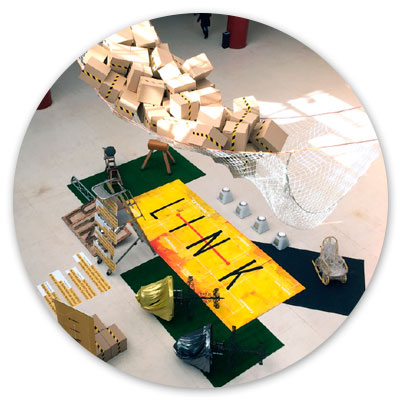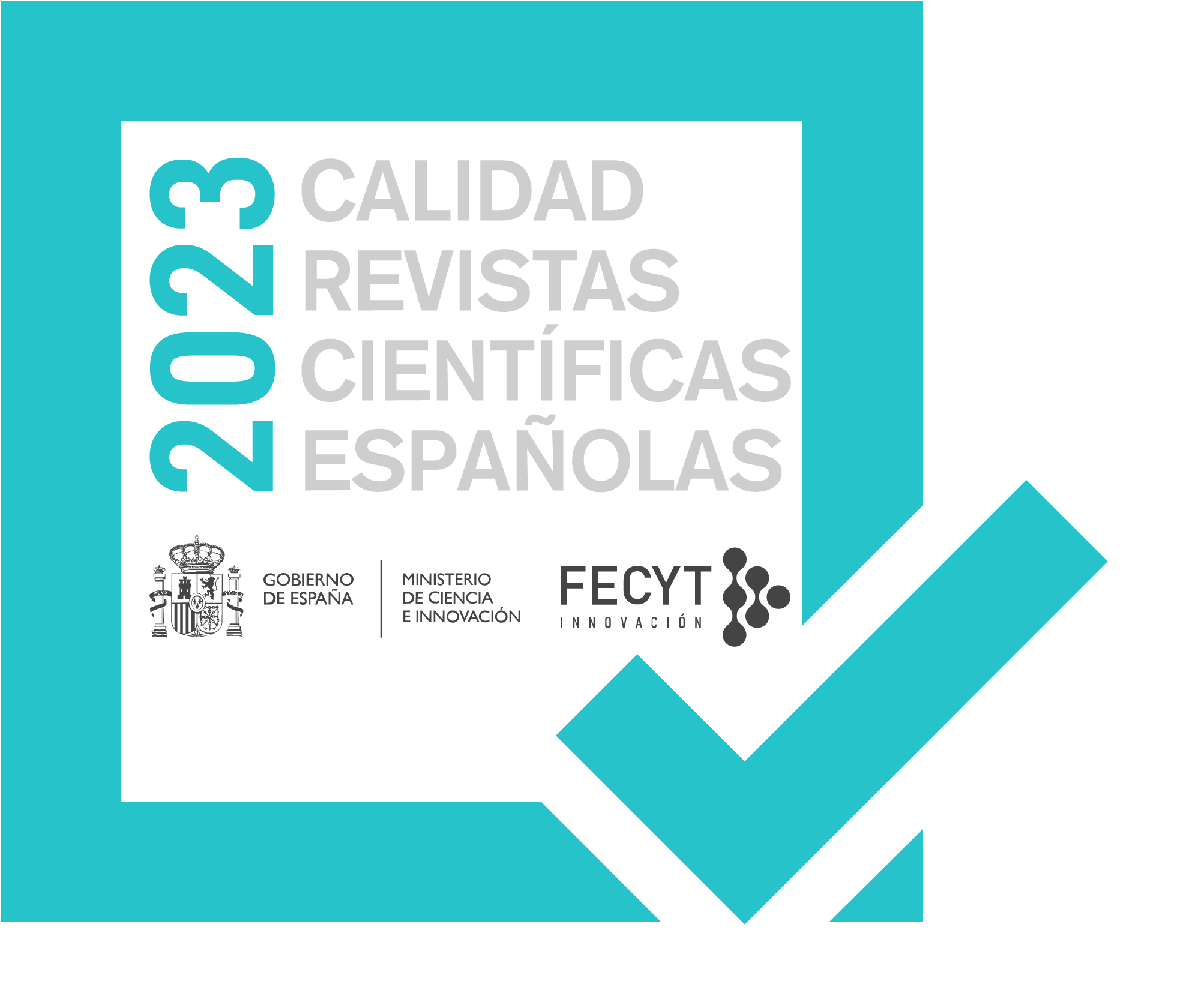Linking spaces, linking people
An artistic installation as a LINK by UMA-Atech branding strategy within a UMA brand architecture.
DOI:
https://doi.org/10.24310/Idiseno.2020.v15i0.10514Keywords:
branding art, branding architecture, open innovation, installation, artAbstract
The Linking spaces, linking people project is a series of actions / interventions that are proposed as a branding strategy for the LINK by UMA-Atech brand on the university campus of the University of Malaga. Strategy composed of different interventions that consist of artistic installations around the campus using a language typical of contemporary artistic practices, thus achieving a combination in the communication strategy - in accordance with the disruptive philosophy - of the brand object of this study: LINK by UMA -Atech, a brand of the University of Malaga. LINK by UMA-Atech is the brand of a service dedicated exclusively to promoting entrepreneurship and open innovation, and whose hub constitutes an ecosystem uniquely different from its parent brand (i.e. institutional brand of the UMA). Our objective is to analyze this case, within its brand architecture, in comparison with the case of the Wayra brand, as a benchmark for entrepreneurship and open innovation and registered in the Telefónica corporation. and thus propose a methodology of implosion and explosion of the brand identity through an explosion strategy that is reflected in the strategy that generated as a result Linking Spaces, linking people. In addition, through this article we identify links through branding art and the need to build a typology of brand architecture for the University of Malaga that allows it to optimize and differentially manage its identity and its entire brand system.
Downloads
Metrics
References
A inspirational book. Link by UMA-Atech. (2015). Universidad de Ma?laga.
Amengual, C. (2014). Gestión de Marca en Telefónica. Retos en el ámbito de la organización. III Foro AEBRAND.
Asociación Española De Empresas De Branding. https://aebrand.org/iii-foro-aebrand-los-retos-en-el-ambito-de-la-organizacion/.
BOE.es-Documento BOE-A-2010-18600. (2010). https://www.boe.es/diario_boe/txt.php?id=BOE-A-2010-18600.
Brand Factory de Telefónica. (2020). https://brandfactory.telefonica.com/.
Capriotti, P. (2009). «De la imagen a la reputación. Análisis de similitudes y diferencias». Razón y Palabra, 70. www.razonypalabra.org.mx.
Carolino, E., & Santos Junior, S. (2018). «Brand portfolio strategy and brand architecture: A comparative study». Cogent Business & Management, 5. https://doi.org/10.1080/23311975.2018.1483465.
Costa, C. V. (2019). Comunicación de crisis, redes sociales y reputación corporativa (ESIC (Ed.)). ESIC. https://books.google.es/books?id=T63jDwAAQBAJ.
Costa, J. (2014). «Diseño de Comunicación Visual: el nuevo paradigma». Grafica, 2(4), 89–107. http://revistes.uab.cat/grafica/article/view/v2-n4-costa.
Dahlen, M., Lange, F., & Smith, T. (2009). Marketing Communications: A Brand Narrative Approach (J. W. & Sons (Ed.)). https://books.google.es/books?id=rLt48XwnW1cC.
Davidson, H. (2002). The Committed Enterprise: How to Make Vision and Values Work (Butterworth-Heinemann (Ed.)). https://books.google.es/books?id=mnCOkhjXjVYC.
Durgee, J. F. (2016). «Exploring what nonprofit branding can learn from contemporary art». International Journal of Nonprofit and Voluntary Sector Marketing, 21(2), 73–81. https://doi.org/10.1002/nvsm.1543.
Fernández Rincón, A. R. (2019). «El legado de la Bauhaus en la identidad visual gráfica de las organizaciones: ideología de lo plano y “flat design”». Pensar La Publicidad. Revista Internacional de Investigaciones Publicitarias, 13, 65–85. https://doi.org/10.5209/pepu.65020.
García-Garrido, S. (2010). «Diseño como vanguardia del arte de nuestro tiempo». HUM 736 : Papeles de Cultura Contemporánea, 4–10. https://dialnet.unirioja.es/servlet/articulo?codigo=3320373.
García-Garrido, S. (2011a). «Arte & diseño como trasmisores visuales de identidad & felicidad». In J. L. Crespo Fajardo (Ed.), Estudios sobre Arte y Comunicación Social (pp. 123–131). Cuadernos Artesanos de Latina. http://www.revistalatinacs.org/067/cuadernos/artesanos.html.
García-Garrido, S. (2011b). Simbiosis y transversalidad entre los distintos ámbitos del diseño y el arte. DDISEÑO: Revista Académica Científica de Información y Desarrollo Del Diseño En El Ámbito Hispano-Italiano-Portugués, ISSN-e 1989-3183, Vol. 6, No. 9, 2011, 6(9), 1. https://dialnet.unirioja.es/servlet/articulo?codigo=4005885.
García-Garrido, S. (2018). «Diseño de comunicación corporativa: marca y diseño estratégico». En Experimenta Libros.
García, P. (2020). Manifiesto de Inversión de Wayra 2020. https://www.wayra.es/news/manifiesto-de-inversion-de-wayra-2020.
Gayá Frangi, A. (2016). Estrategias innovadoras de comunicación de marca: El branding-art [Universidad Abierta Interamericana]. http://imgbiblio.vaneduc.edu.ar/fulltext/files/TC126659.pdf.
Hsu, L., Fournier, S., & Srinivasan, S. (2016). «Brand architecture strategy and firm value: how leveraging, separating, and distancing the corporate brand affects risk and returns». Journal of the Academy of Marketing Science, 44(2), 261–280. https://doi.org/10.1007/s11747-014-0422-5.
Informe Comuniza. Arquitectura de marca en las 50 principales empresas españolas. (2008). https://comuniza.com/wp-content/uploads/2019/09/informe-comuniza-2018-arquitectura-de-marca-50-empresas-espanolas.pdf.
Kapferer, J.-N. (2000). Strategic Brand Management: New Approaches to Creating & Evaluating Brand Equity (Diane Publishing Company (Ed.)). https://books.google.es/books/about/Strategic_Brand_Management.html?id=oQfFAAAACAAJ.
Kapferer, J.-N. (2008). «The New Strategic Brand Management. Creating and sustaining brand equity long term». In Kogan Page Limited (Ed.), Marketing Management. https://doi.org/10.1007/978-0-230-36367-0_7.
Kapferer, J.-N. (2015). «Selecting the brand architecture to match your strategy». In S. P. India (Ed.), The Future of Branding (pp. 3–33). Srivastava, Rajendra K. Thomas, Gregory M. https://books.google.es/books?id=JYSTCwAAQBAJ.
Kotler, P. (2006). Dirección de marketing (Pearson (Ed.)). Pearson.
Larocca, R., & Saracco, C. (2012). Corporate University : The Learning Brand Challenge (Issue September). Allegro234. Ediciones Deusto. Harvard-Deusto. https://www.slideshare.net/allegro234/corporate-university-the-learning-brand-challenge.
Llorens, C., & Polo, F. (2016). Arquitectura de marca. Summa. Allbrand 17. Summa: Allbrand 17. https://summa.es/allbrand/arquitectura-de-marca/.
M. Reguera, J. (2012). Branding-Art o la integración de las marcas en el sistema del arte. https://www.puromarketing.com/3/12030/branding-integracion-marcas-sistema-arte.html.
M. Reguera, J. (2013). Branding-Art, un modelo de marketing estratégico (I). Simbolízate El Blog de Símbolo Ingenio Creativo. https://simbolizate.com/branding-art-un-modelo-de-marketing-estrategico/.
M. Reguera, J. (2014). Branding-art. La identidad de marca y el sistema del arte.
Moreno, M. (2018). Wayra, la aceleradora de startups de Telefónica, se renueva. El Plural, Periódico Digi Tal Progresista. Economía. https://www.elplural.com/economia/wayra-la-aceleradora-de-startups-de-telefonica-se-renueva_203388102.
Presas Mata, F. (2018). «La marca y su integración en el mercado del arte contemporáneo». Investigación, Cultura, Ciencia y Tecnología, Vol. 10 no, 28–35. www.institutociencia.es
Programa Campus de Excelencia Internacional. Convocatoria 2010. Ministerio de Educación y Formación Profesional. (2010). http://www.educacionyfp.gob.es/servicios-al-ciudadano/catalogo/general/0/cei/cei-2010.html.
Romera Lubias, F., & Esteve Secall, R. (2017). Una aproximación histórica y apasionada al sistema de innovación andaluz desde el Parque Tecnológico de Andalucía (S. de P. de la F. Unicaja (Ed.)). http://www.acacr.es/discursos/2017-4 Discurso Felipe Romera.pdf.
Ros, M. del M., & Prats, M. J. (2013). IESE Insight Wayra: viento fresco para Telefónica. https://www.ieseinsight.com/doc.aspx?id=1545.
Sánchez Argilés, M. (2006). La instalación en España. 1970/2000. https://repositorio.uam.es/handle/10486/2553.
Spry, L., Foster, C., Pich, C., & Peart, S. (2020). Managing higher education brands with an emerging brand architecture: the role of shared values and competing brand identities. Journal of Strategic Marketing, 28(4), 336–349. https://doi.org/10.1080/0965254X.2018.1501412.
Telefónica. (2016). Modelo y desarrollo de negocio. Informe Integrado 2016. Capítulo 5. Telefónica. https://www.telefonica.com/documents/153952/13347843/Informe_integrado_2016_capitulo5_es.pdf.
Telefónica da un giro a su imagen y a la de Movistar en su nueva estrategia de marca. (2009). Cinco Días. https://cincodias.elpais.com/cincodias/2009/11/18/empresas/1258555198_850215.html.
Telefónica presenta su marca monolítica Movistar. (2009, November 24). EMOTE Branding. https://emote.es/blog/2009/11/24/telefonica-presenta-su-marca-monolitica-movistar-y-restructu.html.
Telefónica renueva Wayra para apostar por el negocio conjunto con sus startups tecnológicas. (2018). Nota de Prensa. Dirección de Comunicación Corporativa.Telefónica, S.A. https://www.telefonica.com/es/web/sala-de-prensa/-/telefonica-renueva-wayra-para-apostar-por-el-negocio-conjunto-con-sus-startups-tecnologicas.
Vargo, S. L., Wieland, H., & Akaka, M. A. (2016). Innovation in service ecosystems. Journal of Serviceology, 1(1), 1–5.
Ventura, R., Quero, M. J., & Díaz-Méndez, M. (2019). The role of institutions in achieving radical innovation. Marketing Intelligence and Planning, 38(3), 310–324. https://doi.org/10.1108/MIP-01-2019-0050.
Wayra/estudio QA | Plataforma Arquitectura. (2020). https://www.plataformaarquitectura.cl/cl/02-273842/wayra-estudio-qa.
Wayra España: Quiénes somos. (2020). https://www.wayra.es/about-us.

Downloads
Published
How to Cite
Issue
Section
License
Aquellos autores/as que tengan publicaciones con esta revista, aceptan los términos siguientes:- Los autores/as conservarán sus derechos de autor y garantizarán a la revista el derecho de primera publicación de su obra, el cuál estará simultáneamente sujeto a la Licencia de reconocimiento de Creative Commons que permite a terceros compartir la obra siempre que se indique su autor y su primera publicación esta revista.
- Los autores/as podrán adoptar otros acuerdos de licencia no exclusiva de distribución de la versión de la obra publicada (p. ej.: depositarla en un archivo telemático institucional o publicarla en un volumen monográfico) siempre que se indique la publicación inicial en esta revista.
- Se permite y recomienda a los autores/as difundir su obra a través de Internet (p. ej.: en archivos telemáticos institucionales o en su página web) antes y durante el proceso de envío, lo cual puede producir intercambios interesantes y aumentar las citas de la obra publicada. (Véase El efecto del acceso abierto).






14.png)



